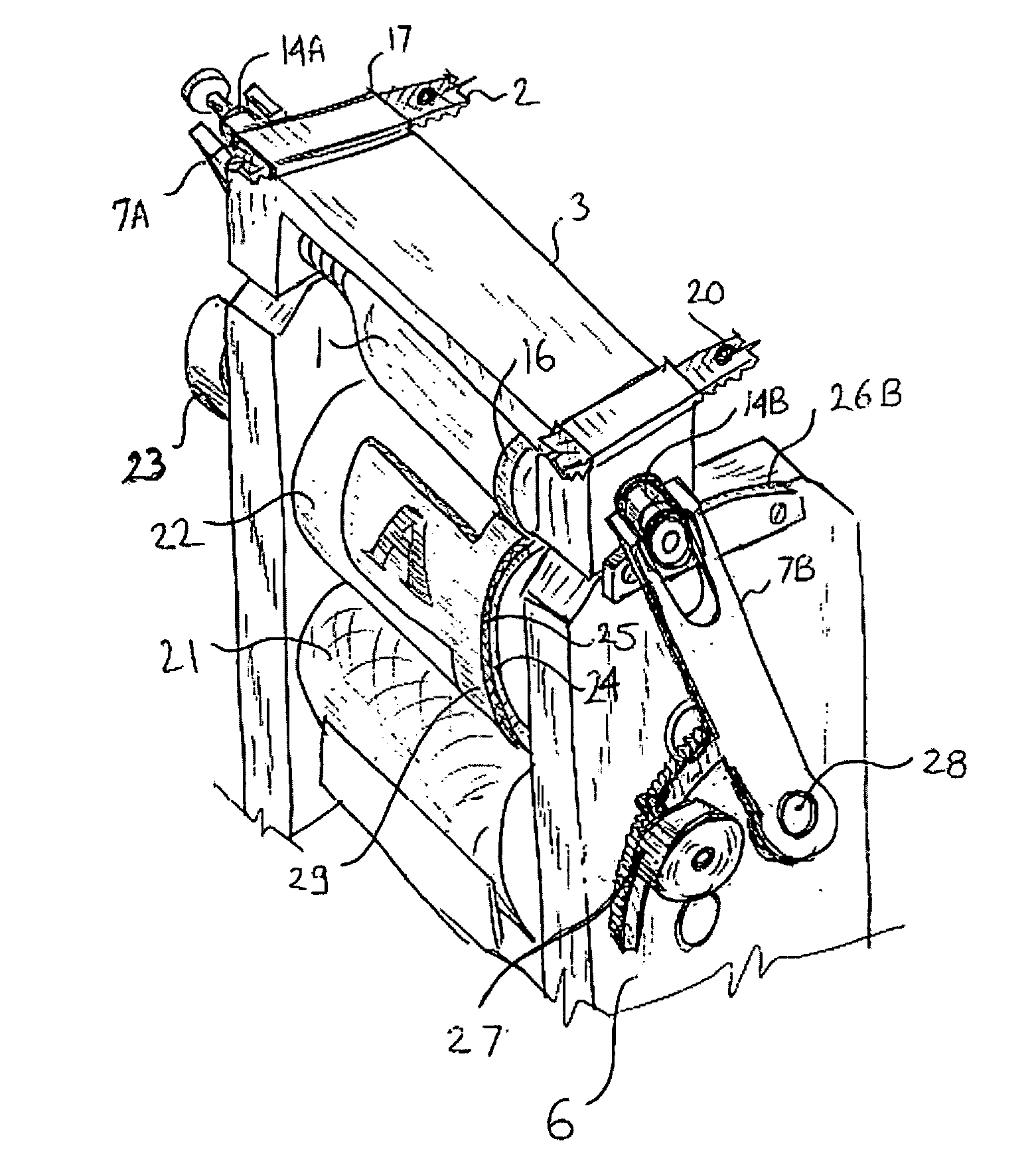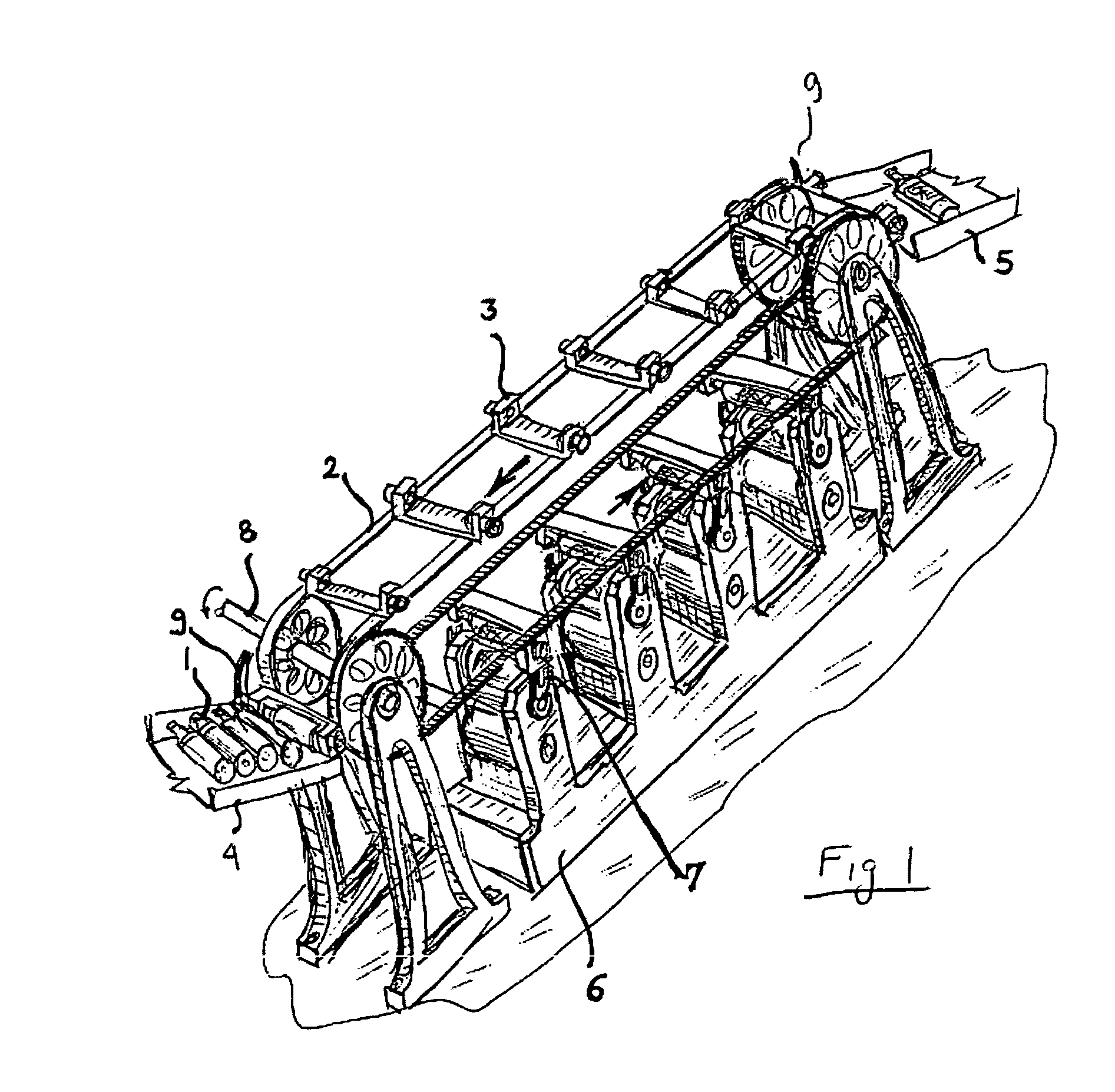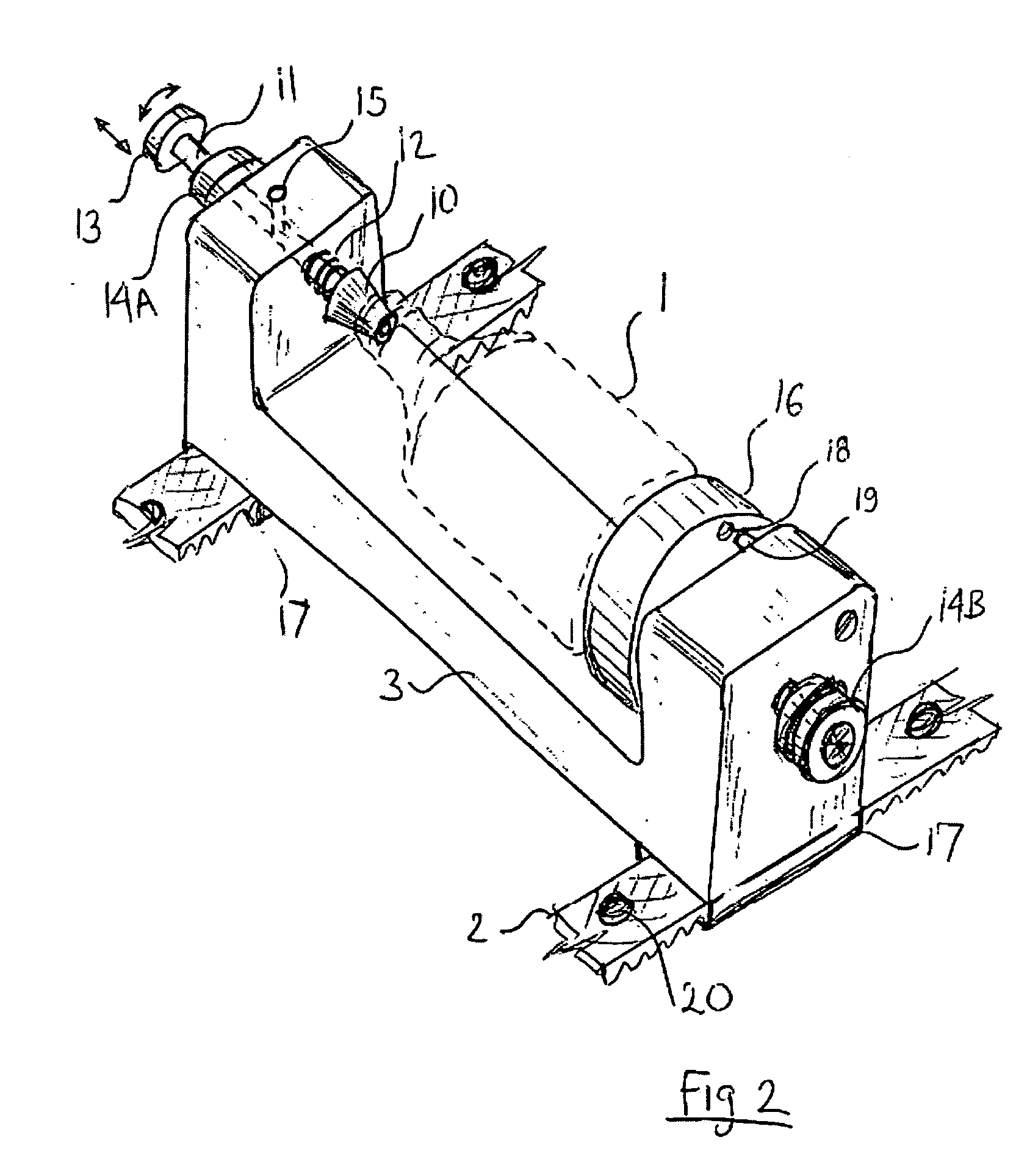Flexographic printing on containers
a flexographic printing and container technology, applied in printing presses, rotary presses, printing, etc., can solve the problems of increasing production costs over direct printing, difficult to print multi-color images, and difficult registration to maintain
- Summary
- Abstract
- Description
- Claims
- Application Information
AI Technical Summary
Benefits of technology
Problems solved by technology
Method used
Image
Examples
Embodiment Construction
[0015] Referring to FIG. 1, a flexographic printing press 6 comprises of a plurality of printing units, each one printing one color. Typically, the number of printing units on such a press is from 4 to 10 units. An endless conveyor belt 2 moves carriers 3 past the printing units. The containers 1 (bottles in the preferred embodiments) are supplied by an infeed tray 4 and are unloaded to an output tray 5. The conveyor belt 2 is powered by shaft 8, which can have a separate motor (not shown) or be connected mechanically to the motor of press 6. If a separate motor is used, it has to be synchronized to the speed of press 6 using the well-known principles of servo systems (also known as “shaftless” system in printing presses).
[0016] At both the infeed and unload positions of conveyor belt 2, means 9 are provided to open the carrier 3 in order to accept the bottle (at the infeed) and release the bottle (at the unload tray). The details of the mechanism 9 are discussed later at the hand ...
PUM
 Login to View More
Login to View More Abstract
Description
Claims
Application Information
 Login to View More
Login to View More - R&D
- Intellectual Property
- Life Sciences
- Materials
- Tech Scout
- Unparalleled Data Quality
- Higher Quality Content
- 60% Fewer Hallucinations
Browse by: Latest US Patents, China's latest patents, Technical Efficacy Thesaurus, Application Domain, Technology Topic, Popular Technical Reports.
© 2025 PatSnap. All rights reserved.Legal|Privacy policy|Modern Slavery Act Transparency Statement|Sitemap|About US| Contact US: help@patsnap.com



